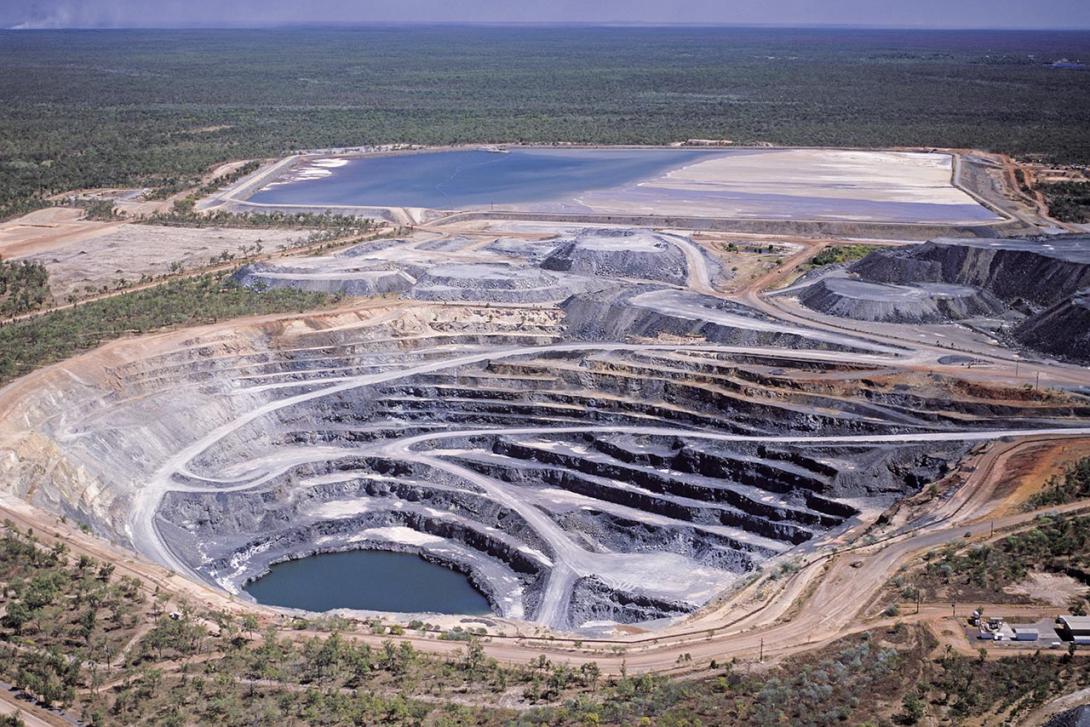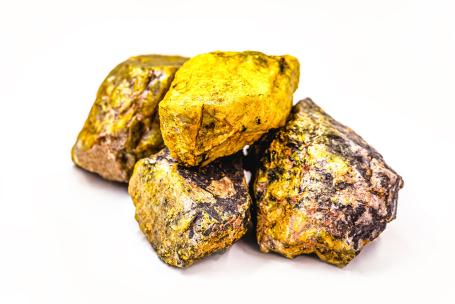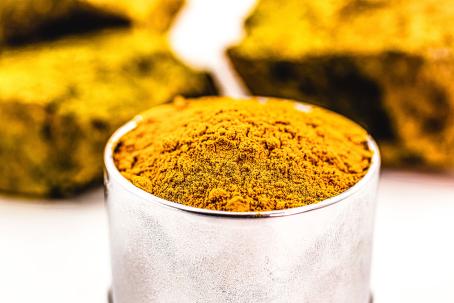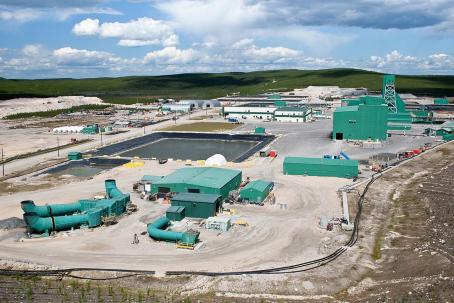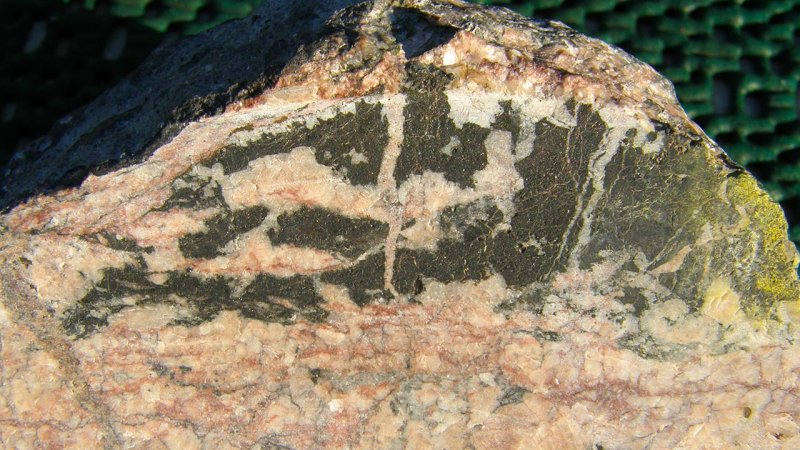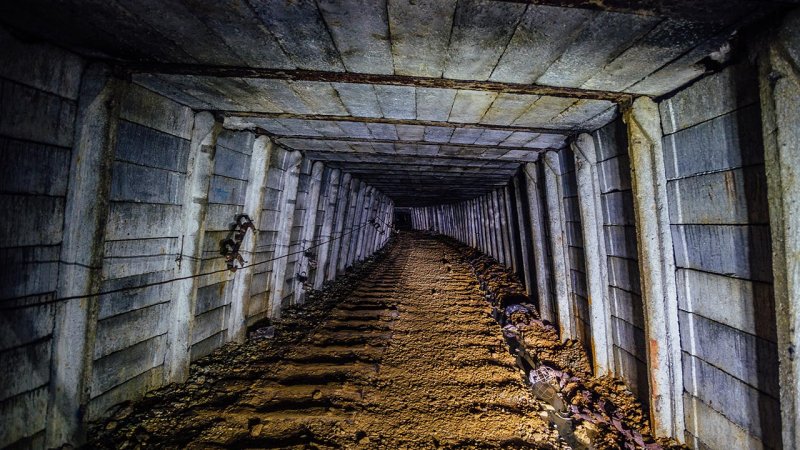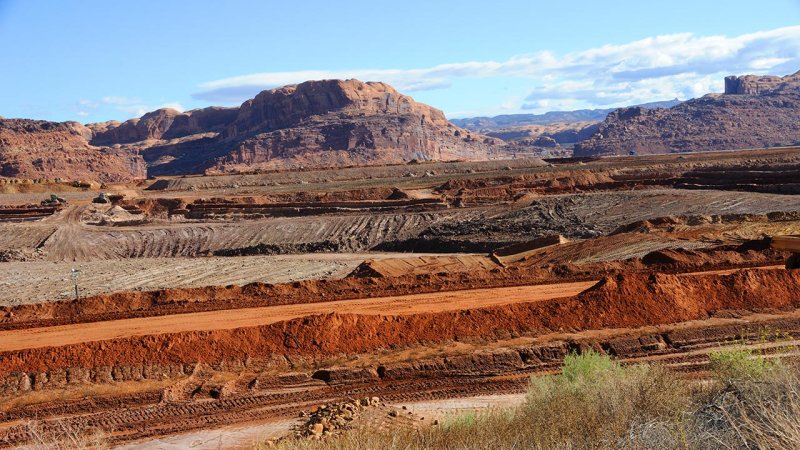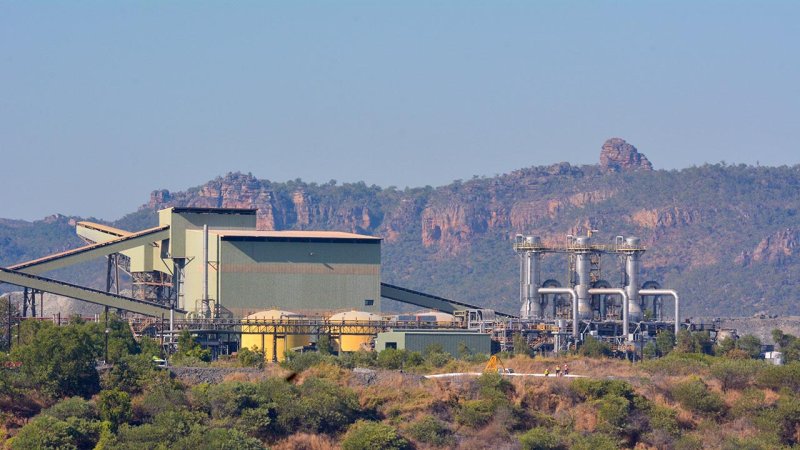
Fuel Production
4 min read
The Ranger uranium mine located in the Australian national park Kakadu is relatively large in view of the fact that Australia does not operate any nuclear power plants.
Uranium is a plentiful element found in the Earth’s crust. The total amount is estimated to be 1015 tons. An additional 109 tons are diluted in the world’s oceans. Deposits of uranium ore can be found throughout the world. The largest known deposits are in Australia (31% of global reserves), the second is Kazakhstan (12%), and the third is Canada (9%). Canadian ore has the highest content of uranium; up to 20%. In excess of 50,000 tons of uranium is mined annually. However, all the global nuclear reactors require 68,000 tons of uranium every year. The balance comes from reprocessing and from nuclear weapons.
Mining
The original from of uranium. After processing, the resulting materials is used to produce nuclear fuel.
Uranium ore is mined either in open cut mines, in underground mines, or by in situ leach mining. Underground mines are less harmful to the environment. However, they must be well ventilated so that a buildup of the dangerous radioactive gas radon is prevented. The extracted ore is crushed and ground and the uranium is then chemically extracted. Silicate ores are leached by sulfuric acid while carbonate ore by a solution of sodium carbonate. The uranium is extracted from the leachate, it is separated and then concentrated to uranium oxide U3O8 or (NH4)2U2O7, known as yellowcake due to its yellow color. It contains 60%—70% uranium. Then it is cleaned and refined.
On Earth, there is 1,000 times more uranium than gold, 30 times more than silver, and as much as zinc, lead, boron, and molybdenum.
Enrichment
Concentrated ore in the form of uranium oxide U3O8, is also referred to, due to its yellow color, as yellowcake.
For nuclear power purposes, it is often necessary to increase the uranium 235U isotope content. Since it differs from uranium 238U by its mass only, chemical separation cannot be used. The easiest method is to use a gas: i.e., to transform the uranium concentrate to uranium hexafluoride UF6 (uranium fluoride), known under the technical term “hex”. The intermediate product of this process is UO2, which is used to produce the fuel for reactors burning natural unenriched uranium. The gas hex is enriched by gaseous diffusion or in a centrifuge. The most common enrichment is to 3—5% of 235U.
The McArthur River uranium mine in Canada is the most important producer of uranium concentrate in the world.
Fuel Fabrication
The gaseous hex is transformed back to UO2. It is mostly in a powder form and it is then pressed into pellets. The pellets are sintered at high temperature in excess of 1,400 °C into a ceramic cylinder. Other additives may be added to the powder, e.g. burnable reactor poison gadolinium or beryllium oxide to improve the heat conductivity. These pellets are then inserted into cladding made of zirconium alloy to make fuel rods that are used to make fuel bundles. Each type of reactor has its own type of fuel.
If used only in conventional reactors, the global uranium deposits would last for the next 80 years.



